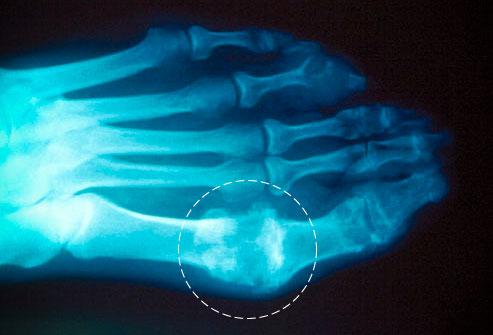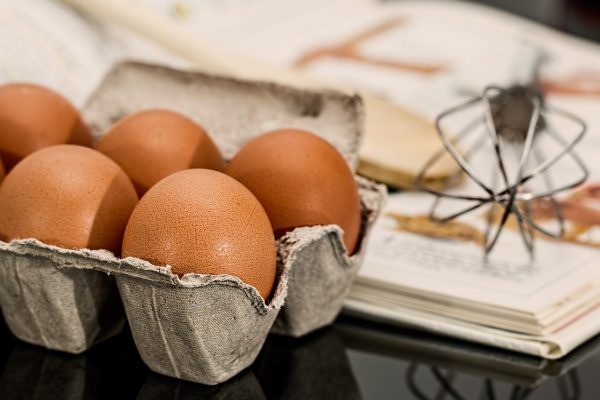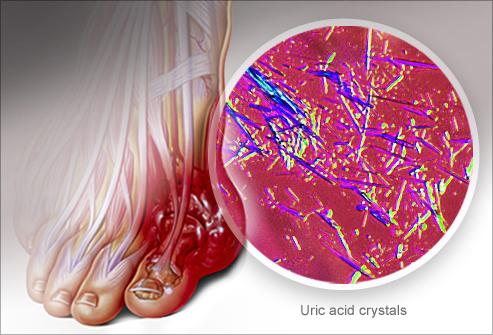Gout is a painful disease frequently found in developed societies. It is caused by uric acid crystals and is closely related to either dietary habits or issues with the kidneys not filtering enough uric acid out of the bloodstream. To control uric acid and prevent gout, it is suggested that the following 10 principles and dietary habits might help in its prevention and management.

Prevention and management of gout
1. Drink sufficient water
The major cause of gout is a high level of purine, which is a colorless crystalline compound with basic properties, forming uric acid on oxidation. It is suggested that at least two liters of water daily can help to eradicate excessive uric acid in the body, which otherwise may develop into crystals around joints and cause gout or inflammatory arthritis.
2. Keep good control over what you eat
Gout is a metabolic disease, and the secret to controlling the level of uric acid is to be selective in what you eat. When the disease is not active, you may eat limited food high in purine, but when the disease is ongoing, vegetables and fruits that are alkaline — such as corn, yam, banana, or white gourd — are recommended, which will facilitate the elimination of uric acid.
3. Move your legs
Exercise can improve metabolism and increase the eradication of uric acid, control body weight, and reduce the development of crystals in the joints. However, you should refrain from doing an excessive amount of exercise within a short period of time, as it can lead to excessive perspiration and urination, which can trigger gout.
4. No alcohol
People who suffer from gout should refrain from drinking alcohol because it elevates the level of uric acid and triggers the onset of gout.

5. Stick to a light diet
The intake of oil or fats should be limited to 25 g a day, and it is considered better to use good quality mono or polyunsaturated vegetable oil, such as olive oil. The intake of salt is limited to 6 g per day, including salt in processed foods or food additives.
6. Control body weight
Keep body weight in the normal range. If weight loss is necessary, it is better to do it gradually. Approximately two kilograms per month is recommended.
7. Appropriate intake of eggs and milk
Keep in mind that the intake of meat should be limited, and eggs and milk should be the major sources of protein because they are relatively low in purine.

8. Eat both rice and flour
Daily food intake is the major source of the body’s energy, and it is better to eat low-purine rice and flour-based meals as staple foods.
9. Eat plentiful amounts of vegetables and fruits
It is important to control gout by taking in lots of fresh fruits and vegetables. Daily intake of 500 g of vegetables and 200 g of fruits are the minimal requirements for patients with gout.
10. Refrain from foods high in purine
Intake of meat broth, fish eggs, sardines, anchovies, and animal organs should be limited because they are rich in purine.
When gout attacks occur, the joints involved are red, hot, swollen, and very painful. An ice pack placed on the site will help to relieve the pain and swelling. Also, elevate the limb, which can help decrease swelling due to edema and relieve the pain.
Translated by Audrey Wang and edited by Helen







